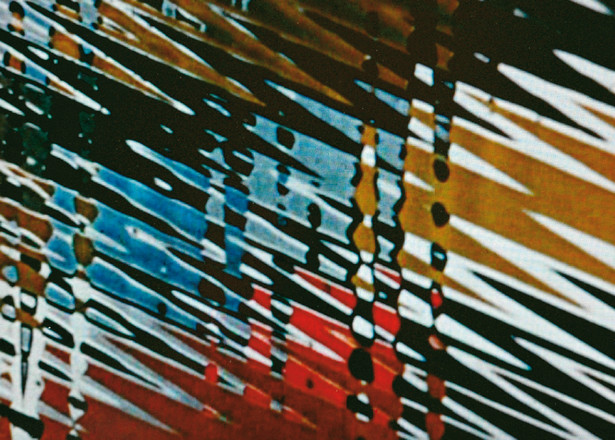It is not a question of returning to the approaches that made their appearance in the 1950s and '60s – kinetic or optical art, for example – even where those contemporary artists who work on retinal stimulation might seem to be following the same line. The psychological dimension in the capturing of reality is more often associated with a technical, or indeed a technological dimension – it being understood that "technology" does not exclude "bricolage" – and the use of mechanical equipment to generate this or that particular form, and not another.
It is neither in a spectacular nor a sensorial way that a loss of reference points of common sense comes about, but rather through a slight shift in visual perception, on the edge of vertigo. A sideways look at the world permeates the whole exhibition and interrogates a form of conditioning, or the possible liberty that subsists between the different thresholds of prehension of reality.
François Curlet's Journaux et Loupes and Carsten Höller's Upside Down Guggles greet the arriving visitor with a "turnaround of the situation" that right away sets the tone of the exhibition: the distortion of reality can go all the way to its inversion. Raymond Hains and Jacques Villeglé's film Pénélope, as a filtering of reality through grooved lenses, immerses the viewer in an abstract projection. One exhibition room is given over to Raymond Hains' multiple research projects as a "bringer together of images", a "natural disorderer", documenting a whole facet of his work that is often overlooked. Although he became well known in the 1960s as a poster artist and a member of the New Realism movement, the fact is that as far back as the end of the 1940s he was working in photography, using grooved lenses. Looking at reality with the intention of inventing new forms was the basis of the "hypnagogic"2 project. As a tireless experimenter on methods, Hains created the "hypnagoscope" – which led to Pénélope, and then later the glasses with grooved lenses. In parallel there was the inception of the "ultra-letters", visual distortions of the words and alphabet of "dé-lire" ("de-reading"). Finally, there is the first of the Machintoshages (Reims, 1998), which might unsettle even an ultra-contemporary manipulator of digital images. The artist can still cause surprises with these unlikely images.
Different modes of distortion of reality resonate with one another around the exhibition: distortions through the digital recreation of images, or through inversion; or again through the production of a hypnotic effect. Ann Veronica Janssens accomplishes a simple, decisive "gesture": that of thrusting into the exhibition space, on the pictorial plane, a universal, infinite reality, an image of the sky filmed in real time. With Jean Daviot, it is the camera-gesture that produces, literally, a luminous, chromatic form of expression.
If there is magic to be found in Rodney Graham's work, it is thanks to a mode of image-production and organisation of cinematographic space that launches a minuscule domestic reality into orbit in visual (or mental) terms.
Nicolas Moulin performs digital operations to transform photographs of Paris into a procession of almost supernatural urban views. In Kolkoz's work, also, distortions of reality follow on from a transposition of filmed situations into three-dimensional computer-generated images: reality virtualised.
Finally, Laurent Grasso proposes the projection of a sky covered in retinal "snow" – a sort of light-dust, between dazzlement and blinding… or a distortion of reality put to the test of perception.
1 La Force de l’art, Paris, Grand Palais, 10 May – 25 June 2006.
2 Hypnagogique: Etymologically, which immediately preceding sleep.


